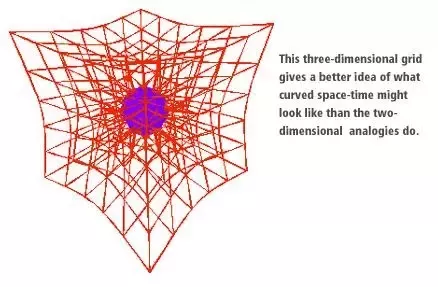Common visualization
Wormholes are often "explained" by a visualization like this where spacetime is reduced to two spatial dimensions:

(Source)
The problem with this visualization
Now I have for a rather long time been bothered by how this implies that a forth spatial dimension exists – since the universe (or space(time)) is curved in 3D space in this 2D representation (spacetime is 2D here), this seems to imply to me that if we were to "add back" the omitted third spatial dimension, the curvature for the wormhole to exist would need to be in a forth spatial dimension (without accounting for time, for now). Or in general, for $n$-dimensional spacetime, we need $n+1$ dimensions for the wormhole to work. At least, this is what these visuals suggest.
Curvature in GR
The problem is that in general relativity, one does in most cases not assume spacetime to be embedded in some higher dimension (see for example my previous question Why does GTR not need a higher dimension to describe the bending of spacetime?); instead, the curvature that explains gravity is intrinsic. Wormholes seem to be no exception: Are wormholes evidence for traversal of a higher dimension?
Some other visualizations of space(time) curvature
For "normal" masses curving spacetime, there exist some other illustrations like this:
(Source)
which are, I think, a bit better – the curvature of time is still neglected, but at least, the illustrations get rid of the "extra" space dimension which is not thought to exist.
I even found this video which claims to include the curvature of time in addition to the 3D-space-curvature above:

(from the video linked above, click here for higher-quality GIF)
I am not sure whether it is conceptually right, but this is not my question – let's focus on the curvature of space to explain wormholes.
Question
How can wormholes be described or rather be visualized without embedding spacetime in some higher dimension? As I already said, all visualizations of wormholes that I have seen so far need an extra spatial dimension.
My idea
Is there any kind of visual representation for wormholes similar to the second image which shows the curvature as a distortion of the grid? The only idea I had was some sort of "tube" between two points where the gridlines are spaced differently, but this would mean that something "outside" this tube could in some sense "collide" with it. This does not seem to make sense. So specifically, how does one get from one place to another without actually doing so (i.e. traversing a smaller distance)?
My attempt at visualizing my idea:

Note
I know that to fully understand the curvature of spacetime or GR, one should study it mathematically, though at the moment, I have, being a high school student, not the required prerequisites. While I know that visualizations are in such cases not to be taken literally, in my opinion they can provide some good conceptual intuition, as far as this is possible.
TL;DR
(How) can wormholes be visualized without embedding spacetime in a higher dimension?
(I do not necessarily require the visualization to have 3 spatial dimensions – 2 would be fine too. Also, I am for now more interested in the curvature of space, so time could be omitted too, which should also make it easier to visualize a wormhole)


